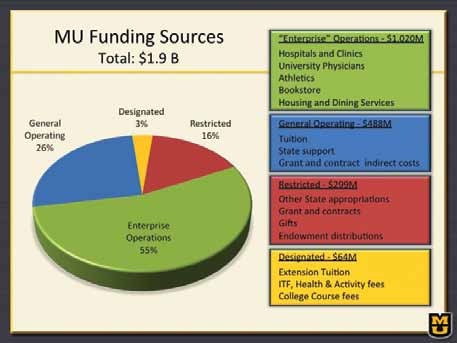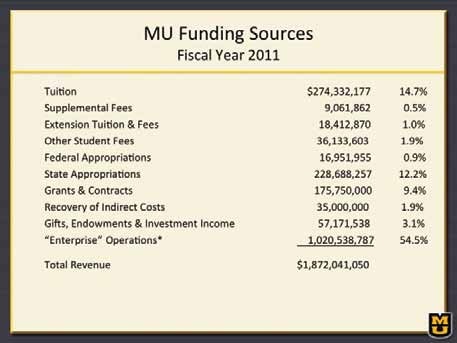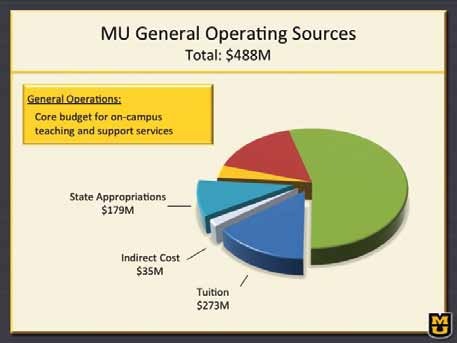Maintaining MU’s state funding is fair, sound investment
Thursday is University of Missouri Legislative Day at the Capitol. Dianne Drainer, the Mizzou Alumni Association advocacy director, is rounding up supporters to help MU lobbyists and administrators save the university from the state budget ax.
It’s a trip worth taking and an effort worth making because deep state funding cuts would undermine MU’s future and damage the vitality of Columbia’s economy.
Gov. Jay Nixon has recommended the General Assembly reduce the university system’s annual budget by 7 percent, which would amount to a $13 million cut for the flagship campus in Columbia. The legislators could cut even deeper or, and this is a long shot, wise up and maintain the university’s current funding.
The UM System praised the governor’s effort to limit the impact of cuts to colleges and universities but noted the reductions would challenge the system’s ability to provide a quality education.
The university has asked the state to approve tuition increases that would still leave the costs for attending MU lower than most of its peer institutions, and even that request isn’t a sure thing in the current political environment.
During a forum for community leaders earlier this month at the Reynolds Alumni Center, MU Budget Director Tim Rooney explained why the cuts would be penny wise and pound foolish.

Rooney posed five questions that he often gets from skeptical legislators and proceeded to plead the case against each of the misconceptions.
• If state funding is only 12 percent of your budget, it can’t be that important. What’s the big deal?
Rooney explained that state funding and tuition are the sources for MU’s general operating budget, or the essential root system that supports the entire university. State support for MU’s general operating budget, its discretionary spending, has steadily declined for two decades, as an accompanying chart illustrates. An independent report published by Illinois State University ranks Missouri 45th in state appropriations to higher education per capita.
• You raised $1 billion in the capital campaign. Can’t you use some of that to balance the budget?
Rooney pointed out that the money usually comes with strings attached, and even if donations are unrestricted, they often are allocated over an extended period of time. “It’s not a substitute for general operating funds,” he said.
• You have a lot of construction on campus. You must not have a budget problem.
Rooney said there is $400 million worth of ongoing construction projects.
But he added that MU uses revenue generated by facilities to pay off the bonds used to finance construction and is not using state dollars or tuition revenue for debt service.
• How can you afford athletics if you have a budget problem?
Rooney pointed out that MU’s athletic department, with a $50 million annual budget, is more self-sufficient than all but a handful of state universities, and he said most of the $2 million allocated by MU is used to cover scholarships for non-resident athletes. The success of high-profile sports, he added, is also boosting overall enrollment, which, again, is helping to fuel the local economy.






